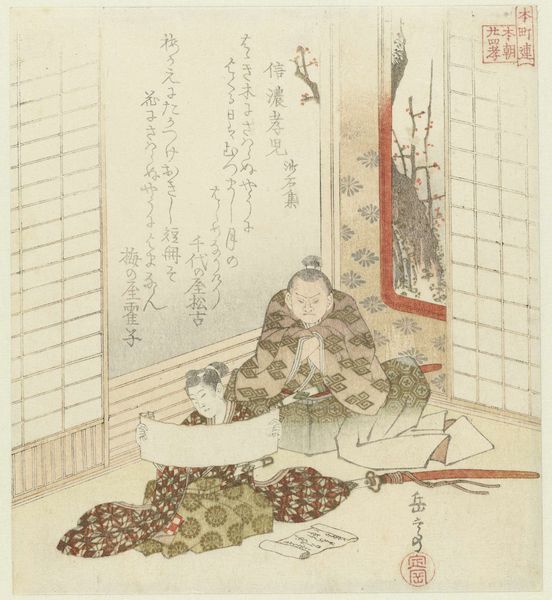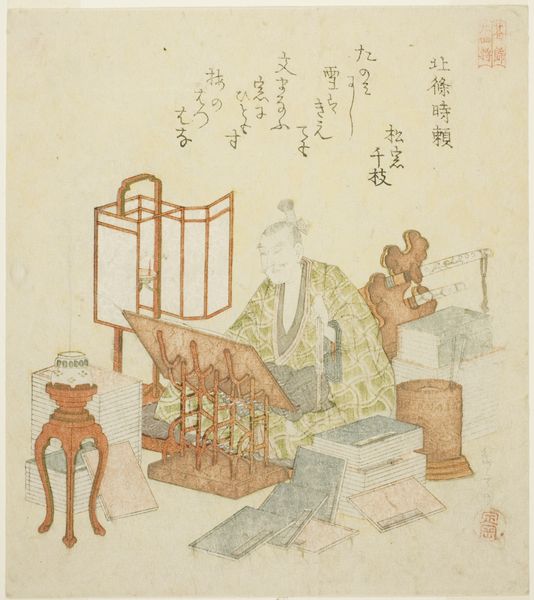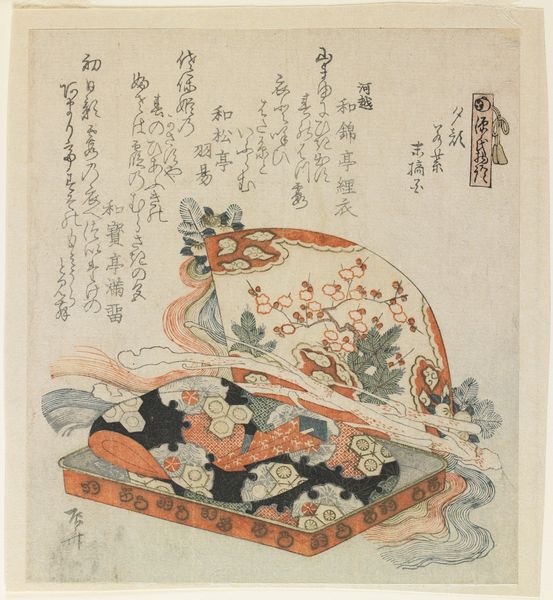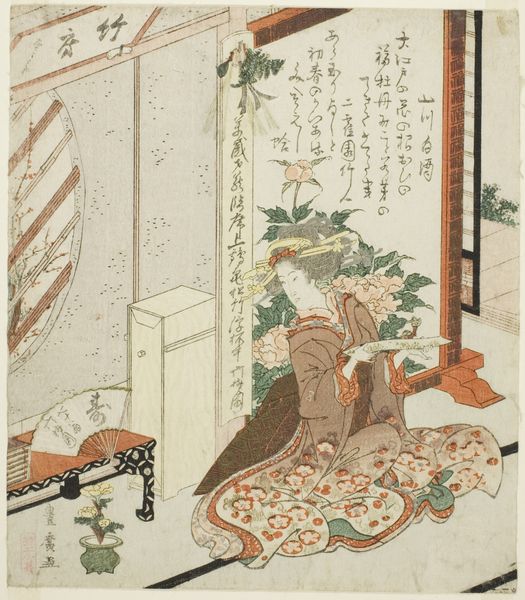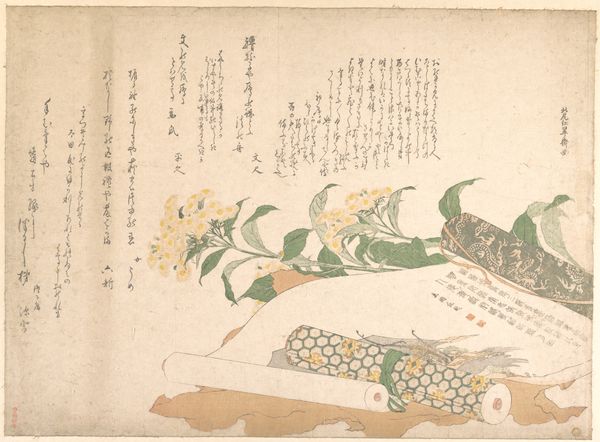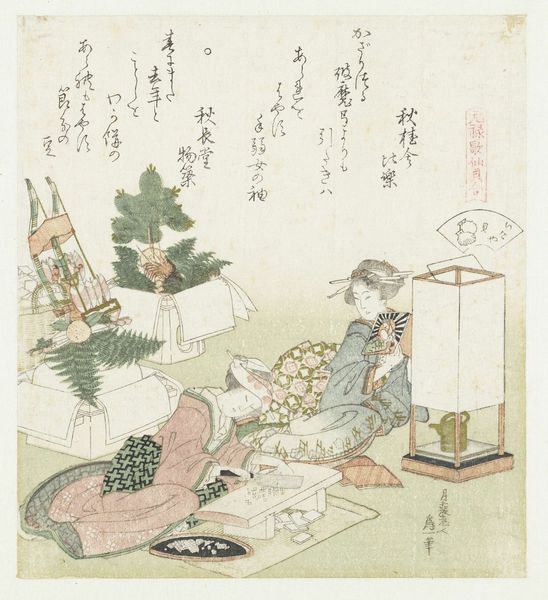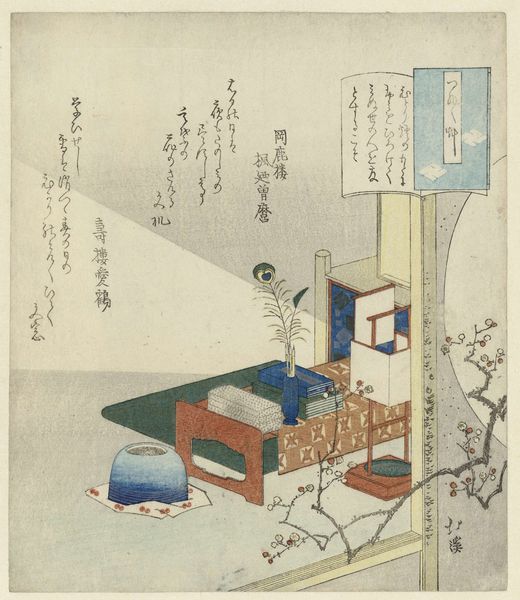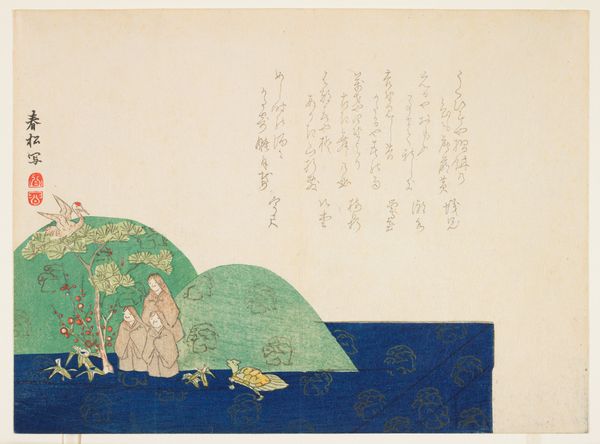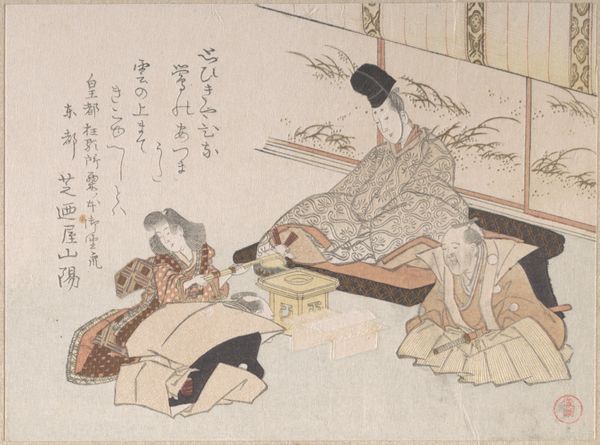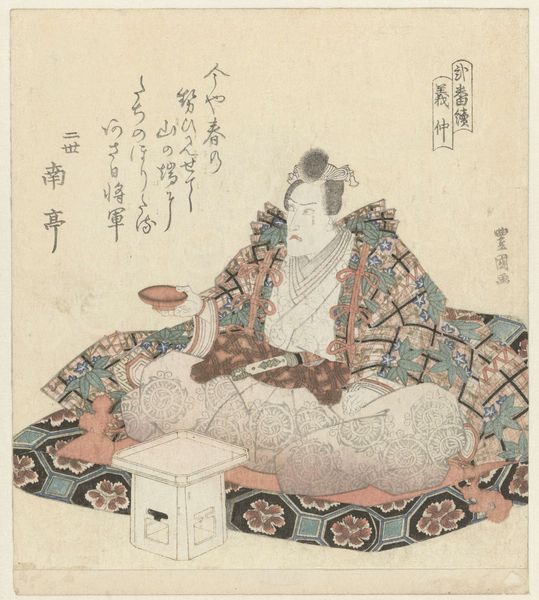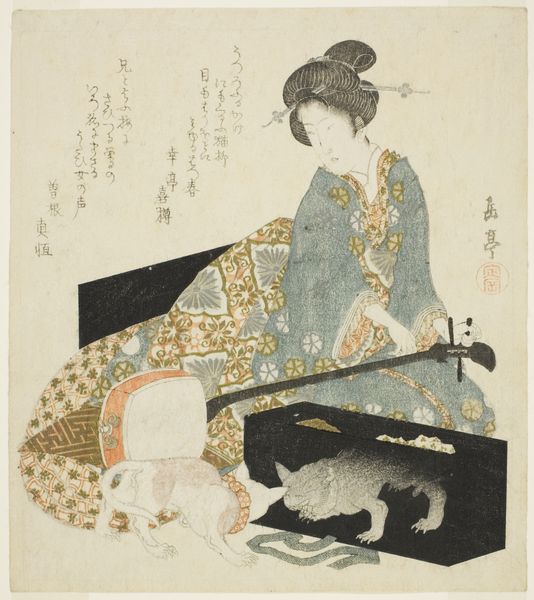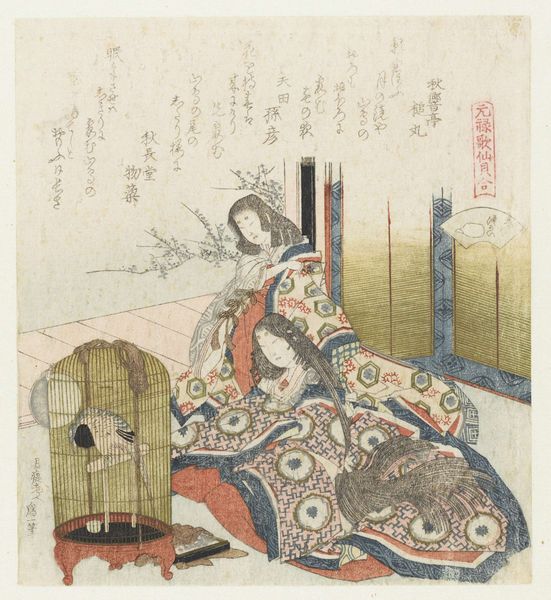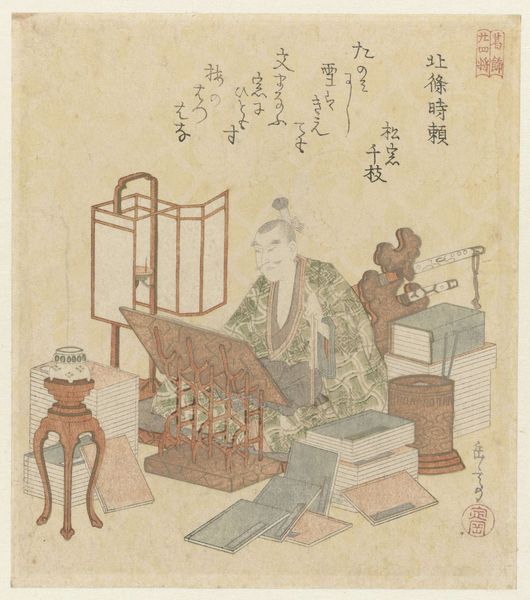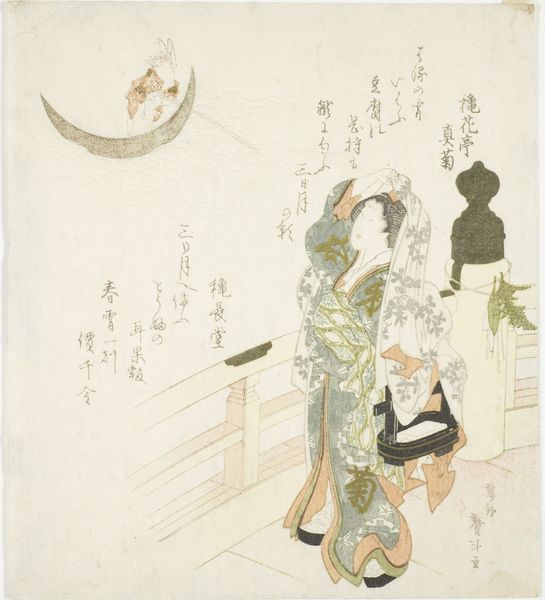
Sekiya, E-awase, and Matsukaze, from the series "The Tale of Genji (Genji monogatari)" c. 1819 - 1820
0:00
0:00
print, paper
# print
#
asian-art
#
landscape
#
ukiyo-e
#
paper
Dimensions: 19.5 × 17.8 cm
Copyright: Public Domain
Curator: Editor: Here we have Ryūryūkyo Shinsai's print, "Sekiya, E-awase, and Matsukaze, from the series "The Tale of Genji (Genji monogatari)", created around 1819 or 1820. It's currently at the Art Institute of Chicago. I am really drawn to the muted colors; they give it a gentle, contemplative feel. What stories do you think this piece tells? Curator: I see in this work a carefully constructed reflection on gender and class through the lens of ukiyo-e. Notice how Shinsai uses traditional motifs – the folding screen, the bird – within the context of "The Tale of Genji". It's crucial to recognize that ukiyo-e were not simply decorative; they functioned as a medium through which societal roles and expectations were subtly negotiated and often contested. Why do you think the artist chose these particular scenes from The Tale of Genji? Editor: Perhaps because these specific scenes were resonant with contemporary audiences? Curator: Exactly! Shinsai is doing more than just illustrating a classic; he’s engaging in a visual commentary. Think about the elaborate details – the clothing, the settings – how might these details be interpreted through a modern lens? Could the confined space represented in the print relate to limitations placed on women, for example? Editor: That's a fascinating way to interpret it. The screen, at first glance, seems decorative, but it could also symbolize a barrier. It really gives us an idea of their standing in that society at that moment in time, doesn't it? Curator: Precisely. These works prompt us to consider how the artistic conventions of the time intersect with gender dynamics. It is up to us to draw insights from past works, by combining historic contexts, contemporary ideas, personal experience and interpretation to challenge preconceived notions. Editor: I see this piece so differently now! It's more than just an illustration; it's a window into social norms and potential subversions of that time. Thank you for opening my eyes! Curator: My pleasure. Art invites us to engage with different ideas. Approaching pieces with this methodology lets you analyze social constructs beyond their immediate surface.
Comments
No comments
Be the first to comment and join the conversation on the ultimate creative platform.
